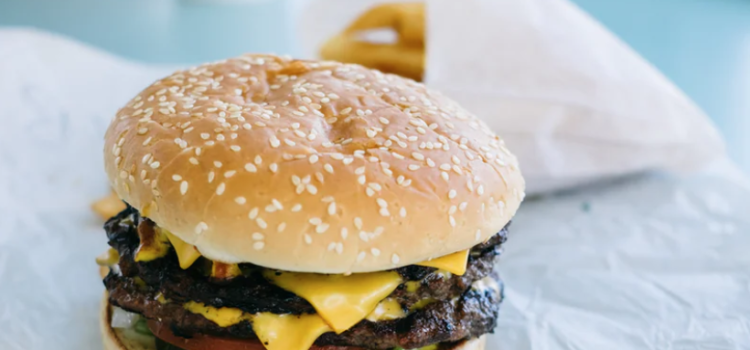

This article is an excerpt from the Shortform book guide to "Fast Food Nation" by Eric Schlosser. Shortform has the world's best summaries and analyses of books you should be reading.
Like this article? Sign up for a free trial here .
What is the Fast Food Nation book about? What are the main themes in the book?
Fast Food Nation is a book about the fast food industry and the many ethical issues present. The book covers issues like problems in agriculture, health, and the environment caused by the giant fast food industry.
Keep reading for key points of the Fast Food Nation book.
Fast Food Nation: Book Covers Ethics and More
Fast Food Nation: The Dark Side of the All-American Meal tells the story of how the United States—and, increasingly, the world—has become shaped and defined by the fast food industry. From its origins in the new suburbs of California in the 1950s, fast food has spread across every corner of the nation and profoundly altered the way American food is produced, sold, and consumed. The rise of fast food has negatively impacted American life, through manipulative marketing aimed at children, exploitative labor practices, the destruction of American family farms, lax food safety standards, and a national epidemic of obesity. Below are some of the key themes and topics from Fast Food Nation.
Rise of Fast Food
The Fast Food Nation book benigs by covering the history of fast food. Fast food began in the early 1950s in Southern California, which experienced a massive population growth in the years following World War Two. This population growth also occurred at a time when rates of automobile ownership were rising, causing the region to be heavily shaped by the car. LA’s low-density, detached-home model of growth was ideally suited for the burgeoning fast food industry, as motorists could drive through for a quick meal as they passed by the restaurants (conveniently located off the new freeways).
Fast Food Nation Book Addresses The McDonald’s System
In the 1950s in San Bernardino, the McDonald brothers implemented a standardized system of food preparation that increased speed, lowered prices, and boosted sales. Food preparation was divided into separate jobs done by different workers, eliminating the need for skilled and expensive short-order cooks. This was the importation of assembly line principles into a commercial kitchen. The business model was a runaway success, enabling McDonald’s to save labor costs and undercut their competition.
A businessman named Ray Kroc witnessed the success of the McDonald’s system and saw that it could be replicated on a national scale. He partnered with the McDonald brothers and began opening new franchises across the country, eventually buying them out in 1961. He established the chain’s core values—Quality, Service, Cleanliness, and Value—and understood the need to create a wholesome, clean, All-American image for McDonald’s. Critically, he understood that children would be the chain’s most valuable customers and directed the bulk of its marketing at them.
Selling to Kids
Because kids exert a strong influence over what adults purchase, marketers know that kids can be powerful surrogate salespeople for their products—and no one has internalized this lesson better than the fast food industry. They aggressively market to children, through television advertisements featuring bright and colorful mascots, on-site playgrounds, and cross-promotional campaigns with toy companies and film studios. The most famous example of the latter is the Happy Meal, within which McDonald’s packages the hottest children’s toys as a “free” promotion. Major toy crazes like Pokemon cards, Beanie Babies, Tamogotchis, and Cabbage Patch Kids have all been boosted by synergistic fast food tie-ins.
Perhaps most insidiously, fast food chains have even brokered deals with school districts, enabling them to promote their high-fat, high-sugar products directly to children through bus and hallway advertisements, endorsement deals, and even direct provision of school lunches.
Labor Exploitation
By minimizing the level of human skill that goes into food preparation, fast food chains have at their disposal a workforce that is cheap, easy to replace, and easily controlled. And they are always finding new ways to keep their employees from gaining any leverage in the workplace. Automatic condiment dispensers, robotic sensors at drive-throughs, digitized timers for cooking french fries, and other technological innovations ensure that McDonald’s and other fast food giants get maximum efficiency out of their employees, with paychecks as low as possible.
They also tend to hire the most vulnerable members of society who have the least ability to fight back—teenagers, the elderly, the disabled, and undocumented immigrants. The industry is known for being one of the most uncompromisingly anti-union sectors of the economy, with a long history of extreme hostility toward organized labor and an established record of turning a blind eye to worker safety. The low wages, disregard for worker safety, and union-busting labor practices extend beyond the fast food chains themselves: these practices have also become hallmarks of the agribusiness and meatpacking industries that supply the fast food sector.
Destroying Independent Agriculture
Another issue covered in the Fast Food Nation book is the rise of agribusiness. The overwhelming economic power and demands of the fast food industry have been disastrous for formerly independent farmers, ranchers, and poultry growers. In the potato industry, the fast food chains force farmers to accept absurdly low prices for the crops they grow: out of $1.50 spent on an order of fries, perhaps two cents accrue to the farmer who actually grew the potatoes. The chains’ purchasing power has created a similar situation in both the beef and chicken markets, with once-independent agriculturalists now working as little more than hired hands for the major agribusiness firms. This has led to the destruction of family farms and the increased centralization of the nation’s food supply.
Deadly Food Poisoning
Deadly outbreaks of E. coli, a virulent pathogen primarily found in beef, have become far more common since the rise of fast food. This is largely due to fast food’s centralized system of food production, which exponentially expands the reach and scope of outbreaks. Today’s slaughterhouses and meatpacking plants are marked by appalling sanitary conditions, where cattle are packed into close quarters, given little exercise, and splash around in pools of manure. After the animals are slaughtered, poorly trained workers often handle the carcasses improperly, pulling out the stomach and intestines of the cattle by hand and spilling the contents of the digestive system all over the slaughterhouse floor and into the meat that’s sold to consumers.
Ground beef is particularly prone to contamination, because the package that’s sold in the supermarket does not come from a single animal. Because of how it is processed and shipped, the meat of just one infected cow can find its way into 32,000 pounds of ground beef.
Obesity Epidemic in Fast Food Nation Book
Fast food has contributed to a national and global epidemic of obesity. In 1991, only four states had obesity rates reaching 15 percent; just a decade later, 37 did. The human costs are immense: severely overweight people are four times as likely to die young as people of normal weight. These health conditions are now increasingly seen in other parts of the world: between 1984 and 1993, fast food locations in the United Kingdom doubled, bringing American-style obesity in its wake. The British consume more fast food than any other Western European country; they also claim the continent’s highest rate of obesity. China also saw its proportion of overweight teenagers triple during the 1990s; meanwhile, at the dawn of the 21st century, one-third of all Japanese men in their 30s were overweight.
Recommendations
It seems like fast food is an unstoppable force as it reshapes communities and cultures, forces workers into exploitative relationships, contributes to global health problems, and despoils the environment. However, there are concrete steps that workers, activists, and elected officials can take to bring the industry to heel.
- Congress should ban companies that sell high-fat and high-sugar products from using the public airwaves to advertise to children.
- States and the federal government should pass legislation that makes it easier for fast food workers to organize labor unions. This would provide a real counterweight to the power of the chains, forcing them to address workers’ grievances.
- The USDA should be given increased funding and new authority to enforce the strictest possible food safety standards, especially for ground beef that it purchases through the federal school lunch program.
- Meatpacking companies must be held accountable for the gross violations of workers’ rights taking place in their plants, including punitive sanctions for every injured worker and even criminal prosecutions of executives who knowingly turn a blind eye to employee safety.
- The Justice Department must step up its antitrust enforcement actions to break up the power of the major agribusiness firms that have reduced America’s once-proud independent farmers to little more than sharecroppers.
The fast food industry is not all-powerful and its continued dominance is hardly assured. In the past, Americans overcame powerful business interests to ban child labor, establish a minimum wage, and create publicly funded bridges, roads, schools, and national parks—and they can do it again.

———End of Preview———
Like what you just read? Read the rest of the world's best book summary and analysis of Eric Schlosser's "Fast Food Nation" at Shortform .
Here's what you'll find in our full Fast Food Nation summary :
- How the fast food industry reshaped the American economy
- How fast food marketing is manipulating you
- Why the rise of fast food has destroyed family farms across America






